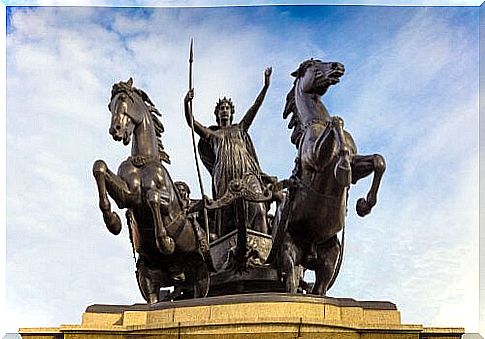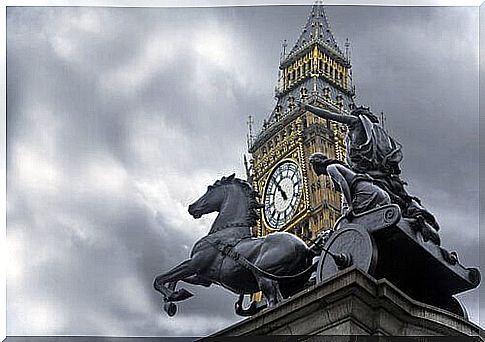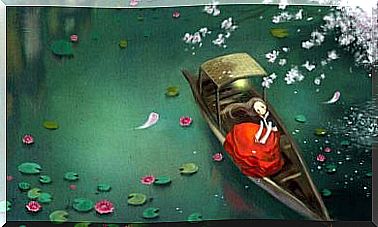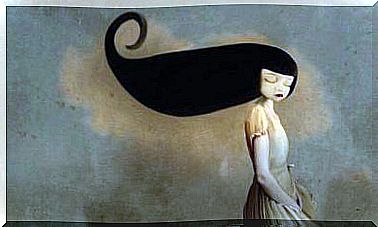Boudicca, The Rebel Queen

61 AD, British Isles, somewhere on present-day Watling Street, the great road built by the Roman Empire to communicate Wales with the rest of the island. Boudicca, a tall (by the standards of the time) woman with long red hair and a strong frame, quickly ingests a deadly poison, perhaps supplied by her daughters. This is how Tacitus tells the final point of one of the great ancient tragedies.
This woman is none other than the legendary warrior queen of the Celtic Icens, Boudicca, Boudica in her native tongue. Remembered for uniting under the same command the rebellious British tribes against the Roman invasion, it won the right to enter the list of Rome’s great rivals, along with Viriato, Hannibal, Arminio, Spartacus or the aforementioned Gallic leader. Your legend is confused with the stories your enemies left us.
Rome, an expanding empire
After Julius Caesar’s famous conquest of Gaul, the Roman Republic sought new lands and conquests to employ its legionaries and fulfill the ambitions of its generals. The legendary general planned the invasion of the British Isles, probably interested in taking over the land from which the great Celtic druids came. However, the starting signal for the inevitable conquest came from the hand of Emperor Caligula.
Shakespeare left us his work Cymbeline, set in these early battles. Later the emperor Claudius would continue the campaigns. In these times, some tribes joined the protection of Rome, while some caudillos, like Caradawc, made revolts more or less victorious. In these times, the conquerors founded Londinium, now London, on the banks of the River Thames.
The guerrilla in the forest had continued victories, but not very relevant: the lot seemed to be cast.

Boudicca, dowager queen
One of the kings who allied with the Latins was Prasugatos of the Iceni. In exchange for the protection and support of Emperor Nero, this monarch promised to bequeath his title and land after the death of his daughters. We do not know how the end of his days came, but this was the trigger for the conflict. Roman law did not recognize the female inheritance, therefore, for them there were no legitimate heirs of the king.
Perhaps the most likely end was for the Empire to commit its abuses without difficulty, but the story wanted Prasugato’s wife not to bow. At this moment, we received the first news from Boadicea, who as a widow claims her rights according to the tradition of her people. The queen’s resistance is met by the generals with floggings, abuse of her daughters and killing of her lieutenants. Meanwhile, the supposed Roman allies capture land and attack local traditions.
The fuse of rebellion was lit: Boudica will not shirk the conflict, giving in is not an option.
The Boudican Rebellion
Her name, or perhaps the nickname she is known for, means ‘the victorious one’, and riding her war chariot will guide her people, driven by the humiliations suffered. Getting several tribes and many other warriors to join her will lead the greatest force the Romans will face on the islands. Certainly her loose hair and her war paints, mounted on her car like the statue that is now in London in her memory, would generate a terrifying image in her enemies.
With her troops, she invaded and looted Londinium and other cities in the south of the island, very Romanized at the time. Roman historians assert that he left no room for any pity, certainly like the soldiers of the Mediterranean. He unhesitatingly defeated the mighty Hispanic Legion, in a milestone difficult to imitate.
His victories increased the number of his followers, but after nearly a year of guerrilla warfare, the Roman general Suetonius managed to react.

The tragic end of Boadicea
In a narrow stony valley, with a great inequality of equipment, discipline and forces in relation to the Romans, the great final battle took place. The inability to break the Roman formation ended the hopes of the Celts, who soon fled in disarray. It was an absolute defeat, with about a hundred rebel deaths for each of Rome and her allies.
Faced with the inevitable end, Boadicea chose death over captivity once more, aware of what would happen if she were captured alive. Suetonius could not display the defeated queen, but Britain would never again have a leader like her. A life of betrayal, humiliation and revenge was coming to an end.
Many warriors fought with Boudicca, and although they never formed most of the Celtic armies, they also fought for her life, her lands, and her freedom.









